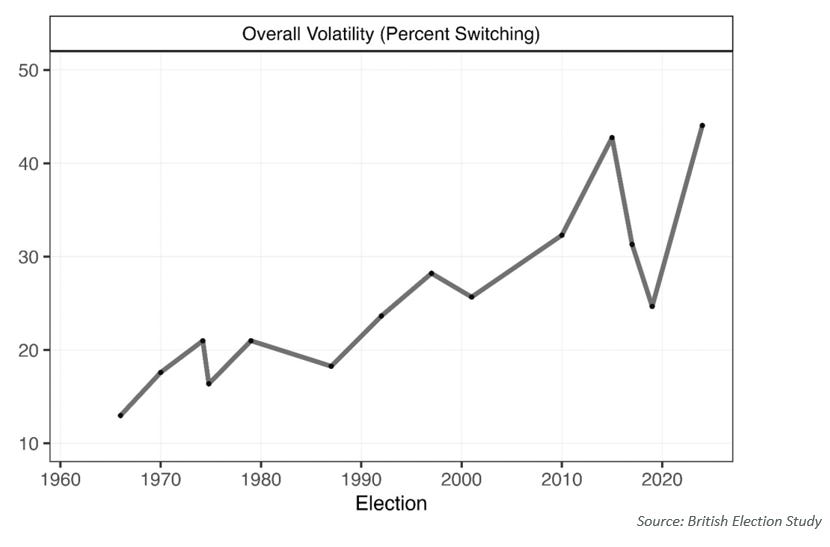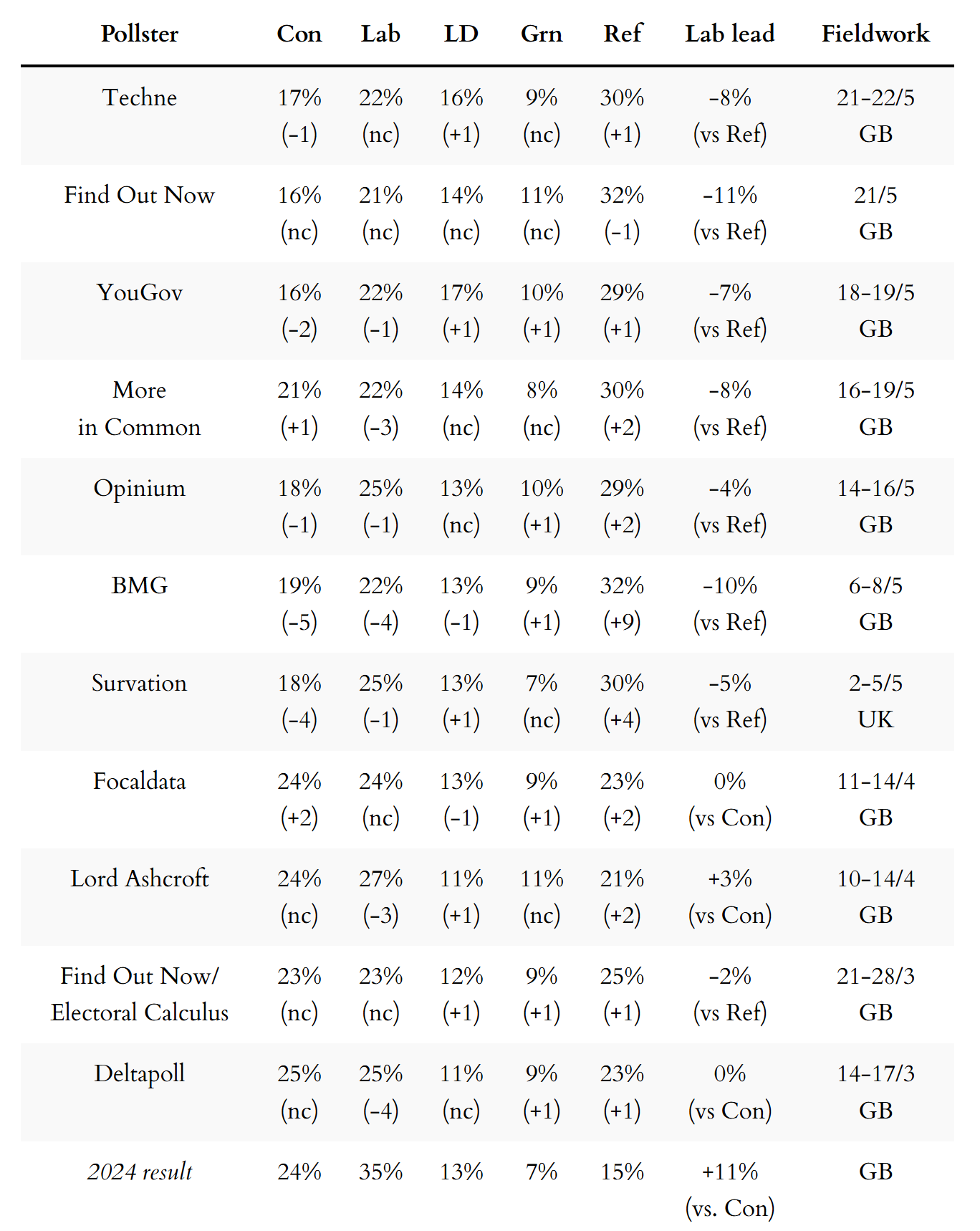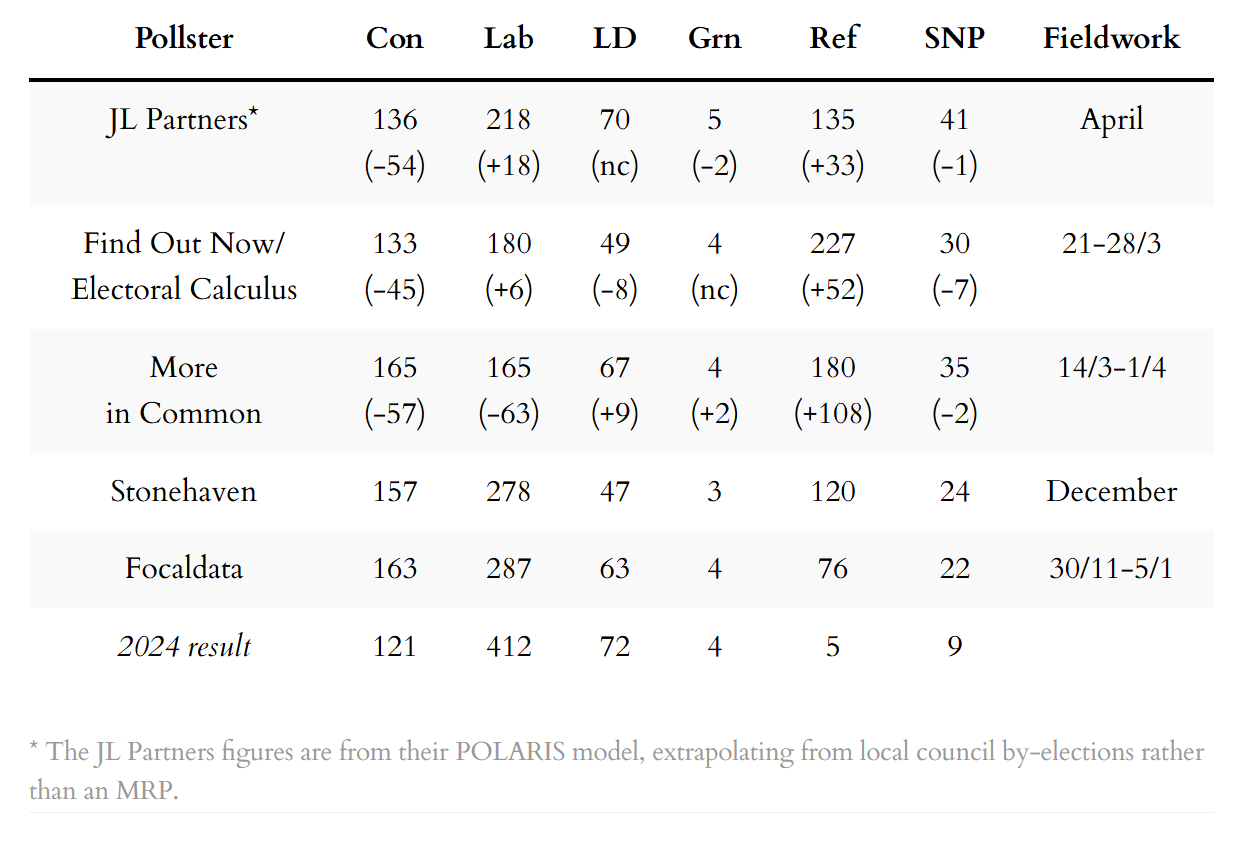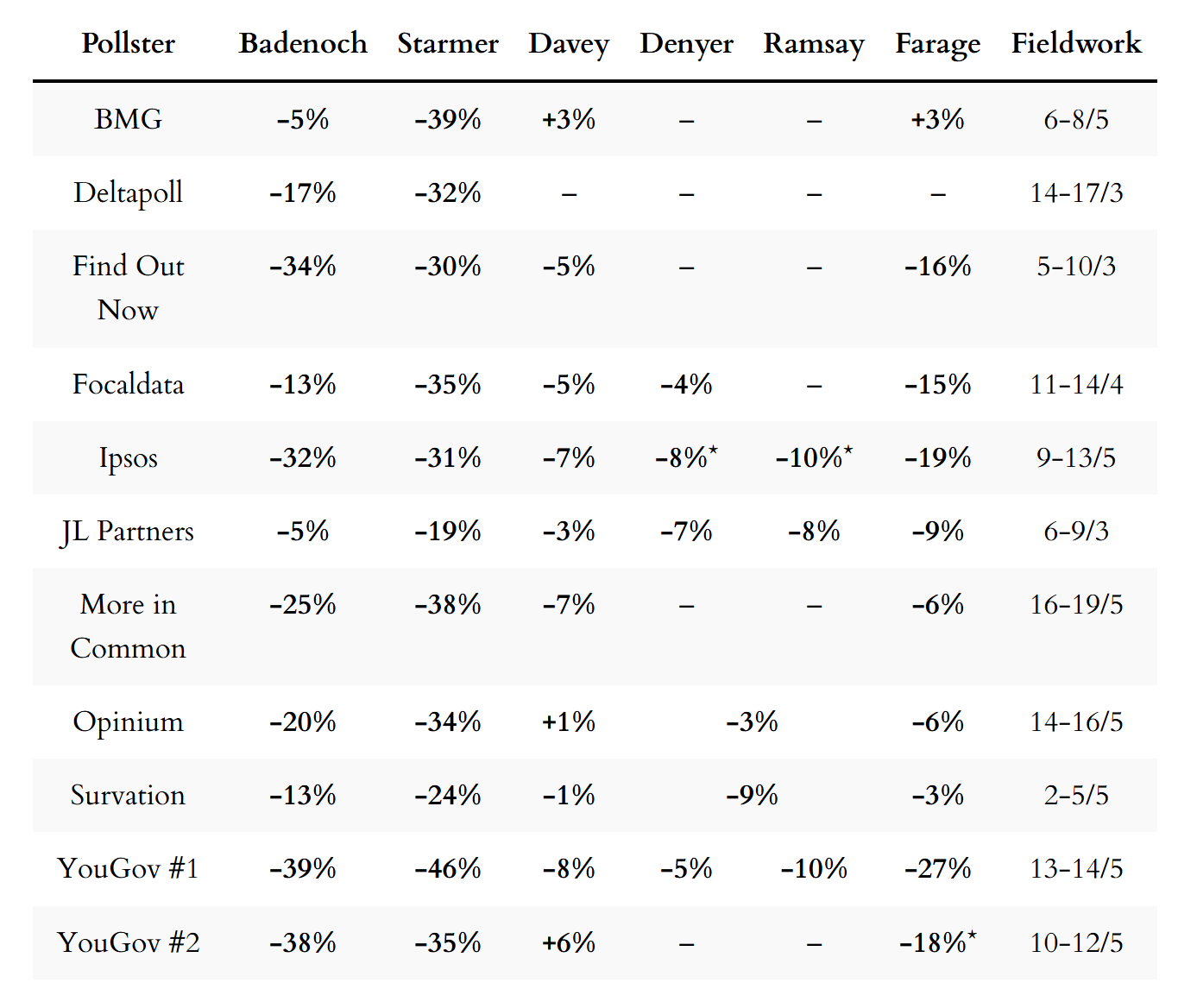Lessons from polling at the 2024 general election
Welcome to the 162nd edition of The Week in Polls (TWIP) which takes a look at the lessons learnt at the recent British Polling Council event on polling at the 2024 general election.
This edition, as is so often the case, draws heavily on the work of those at UK universities, so a little thank you for me in return with a special offer for anyone with an .ac.uk email address: you can sign up for the paid-for version of this newsletter at half price:
After those lessons, it is a summary of the latest national voting intention polls and a round-up of party leader ratings.
Those are followed by, for paid-for subscribers, 10 insights from the last week’s polling and analysis.
This time, those ten include an alarming graph of survey response rates.
Having sometimes both poked fun at polling coverage in Daily Telegraph and also at coverage of polls omitting the Ed Davey figures, it is only fair for me to point out that the Daily Telegraph went for a large full colour photo of Ed Davey on a rollercoaster for its recent coverage of leadership polling figures.1
And with that, on with the show.
Want to know more about political polling? Get my book Polling UnPacked: the history, uses and abuses of political opinion polling.
Lessons from polling at the 2024 general election
Although I have plenty of views on how the self-regulation of British political polling by the British Polling Council (BPC) could, and should, be improved, there are two things the current setup certainly does impressively well.
First is the basic transparency that sees full details of polls published within a few days of a poll becoming public.
Second are the events the BPC puts on at which pollsters reflect frankly on their hits and misses. Particularly given how little really well informed polling journalism there is in the UK,2 and given how technical the academic literature can get, these events are to be cherished for their opening up of polling debates to wider audiences and using accessible arguments and evidence.
Hence the focus this week on the BPC’s recent event on polling lessons from the 2024 general election.
Before getting to the main lessons, a few other findings jumped out at me from the data presented, including the extent to which support for both the Lib Dems and Greens skewed towards those deciding very late on who to vote for:
Next, how pronounced the trends are by age even within the 65+ age group:
In addition, the voters really were more volatile:
As for the accuracy of the polls, as I covered in my debrief last year, they did pretty well but with some causes for hard thinking about how to do (even) better:
As the BPC summarises it:
• Systematic polling error: Most pollsters overestimated Labour’s vote share in the recent election – the largest overestimation of Labour since 1979. This reflects a historical pattern where UK polls often overstate Labour support, though the specific causes remain unclear despite multiple potential factors being discussed.
• Methodological challenges: Several technical polling issues were examined, including demographic weighting (particularly for education, age groups like 75+, and ethnicity), handling of “don’t knows” and refusals, and the significant problem of declining response rates leading to potential differential non-response bias. Pollsters are awaiting the British Election Study random probability post-election survey for greater insight into the potential impacts of differential non-response bias in 2024…
• Media representation concerns: There was significant worry about how polls (especially MRPs) are presented by journalists, who often treat projections as certainties rather than estimates with margins of error. This can potentially damage polling credibility and inappropriately influence campaigns and voters.
• Future recommendations: Suggestions included developing standardised guidelines for MRP reporting, improving handling of late-deciding voters, embracing methodological pluralism, exploring mixed-method approaches, and enhancing transparency – all while acknowledging that 2028/29 may present even greater polling challenges due to fragmentation, especially for MRP estimates and their uncertainties given knife-edge races.
More information and the full slides on the BPC website here.
Voting intentions and leadership ratings
Here are the latest national general election voting intention polls, sorted by fieldwork dates.
Reform, and to a lesser extent both the Lib Dems and Greens, are consistently up since the local elections, with the Conservatives being the largest losers:
Next, the latest seat projections from MRP models and similar, also sorted by fieldwork dates:
Rob Ford has a good thread on the limitations of such seat projections this far out from a general election.
Finally, a summary of the latest leadership ratings, sorted by name of pollster.
Ed Davey generally continues to come out best, though there has been a bump in Nigel Farage’s ratings since the local elections:
For more details, and updates during the week as each new poll comes out, see my regularly updated tables here and follow The Week in Polls on Bluesky.
For the historic figures, including Parliamentary by-election polls, see PollBase.
Catch-up: the previous two editions
My privacy policy and related legal information is available here. Links to purchase books online are usually affiliate links which pay a commission for each sale. For content from YouGov the copyright information is: “YouGov Plc, 2018, © All rights reserved”.3
Quotes from people’s social media messages sometimes include small edits for punctuation and other clarity.
Please note that if you are subscribed to other email lists of mine, unsubscribing from this list will not automatically remove you from the other lists. If you wish to be removed from all lists, simply hit reply and let me know.
Views on the UK-EU deal, and other polling news
The following 10 findings from the most recent polls and analysis are for paying subscribers only, but you can sign up for a free trial to read them straight away.
A slender 3 point lead for a major government policy might seem a bad result. But,
Keep reading with a 7-day free trial
Subscribe to The Week in Polls to keep reading this post and get 7 days of free access to the full post archives.









